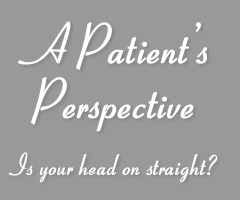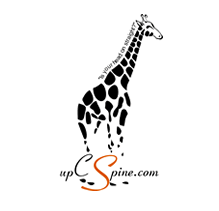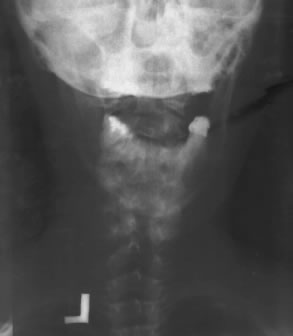

 |
 |
| Home | Evidence | Anatomy |
The TMJ Link THE TMJ LINK TMJ stands for temporomandibular
joint and according to the AAOMS1 "is
a small joint in front of the ear where the skull and the lower jaw meet.
This joint allows the lower jaw (mandible) to move and function, and is
the most constantly used joint in the body." In other words this
little, yet resilient joint really gets a workout mostly during normal
everyday events, such as eating, yawning, singing, shouting and talking.
Further AAOMS states "the teeth themselves are also important for
proper TMJ functioning, because if they don't fit together properly,
stresses can be generated that can displace the condyle and damage the
disc, ligaments and muscles." There are many studies, websites and
books 2, 3, 4, 5, 6, 7 which link dysfunction of the TMJ, known as TMJ
dysfunction or TMD or craniocervical mandibular disorders [CMD] to multiple
symptoms, including but not limited to tinnitus, Meniere's disease,
decreased hearing, aural fullness, headaches, dizziness, difficulty balancing,
difficulty swallowing, neck and shoulder soreness, cracking & clicking
sounds in the jaw joints, limited mouth opening, visual disturbances and
in some cases neurological diseases. Many of these sources also cite cervical
spine dysfunction [CSD] as being a contributing and correlating factor
in TMD. My own experiences and those of others support the relationship
between cervical spine problems and TMD. The issue to be investigated
being, is TMD a result of CSD or vice versa? The answer is probably both,
in that faults in the TMJ system can induce problems in the cervical spine,
and CSD does create problems with the TMJ. There are people of course,
who have no cervical spine symptoms and exhibit TMD, however I think that
these people are rare. For me the connection is fairly obvious when viewing
radiological images of people with atlas subluxations it becomes patently
obvious that the jaw mandible and hence the TMJ are out of alignment.
The crooked or tilted head (X-ray opposite) sitting atop the cervical For me the most painful part of eating was nothing to do with my joints themselves, but due to muscular spasm in the right trapezius and right lower scalenes. The pain was excruciating and the symptoms which occurred during and after eating bizarre to say the least. However, in researching TMD and CSD, the symptoms experienced no longer seem bizarre, but make a lot of sense and certainly could be the result of a crooked head sitting off centre on top of my neck. Again, as mentioned elsewhere, the neck, which I consider as the conduit to and from the body, is rich in many nerves and blood vessels. Compression of these will cause problems and further the scalenes lay near the brachial plexus of nerves at the base of the neck, which when compressed are implicated in Cerebral Thoracic Outlet Syndrome [CTOS]. For me CTOS is nothing more than an upper cervical (C1 to C0) subluxation for the symptoms of CTOS caused by the coiling and kinking of various arteries appear suspiciously like those as a consequence of atlas subluxations. The close relationship of TMD to CSD warrants close
scrutiny and certainly collaboration between both chiropractors experienced
in upper cervical analysis and adjustment and dentists experienced in
TMD. That is why I suggest both these steps are included in any therapy
to correct both apparent problems. The longer a person has had both problems
the more damage is done to both mechanisms. Long-term positive corrections
can only be maintained with professionals, UpC chiropractors and TMJ dentists
working in harmony.
|
 spine
results in non-alignment or disarticulation of the TMJ in the cranial
fossa (recess). The joints do not work properly, with the disc being captured
during opening and/or closing, and the neck and shoulder muscles going
into painful spasm during the normal process of eating. There are some
163 or thereabouts muscles and ligaments in the head and neck area which
are used in the process of eating. There are interrelationships and interconnections,
which you or I couldn't even dream about. There is a ligament known
as the stylomandibular (SM) ligament, which may play a role, however I
am only speculating as to its involvement. The SM attaches from the styloid
process on the skull to the outside of the mandible (lower jaw). It seems
to me that a tilted head will result on this ligament pulling on the mandible
and causing a misalignment of the TMJ.
spine
results in non-alignment or disarticulation of the TMJ in the cranial
fossa (recess). The joints do not work properly, with the disc being captured
during opening and/or closing, and the neck and shoulder muscles going
into painful spasm during the normal process of eating. There are some
163 or thereabouts muscles and ligaments in the head and neck area which
are used in the process of eating. There are interrelationships and interconnections,
which you or I couldn't even dream about. There is a ligament known
as the stylomandibular (SM) ligament, which may play a role, however I
am only speculating as to its involvement. The SM attaches from the styloid
process on the skull to the outside of the mandible (lower jaw). It seems
to me that a tilted head will result on this ligament pulling on the mandible
and causing a misalignment of the TMJ.